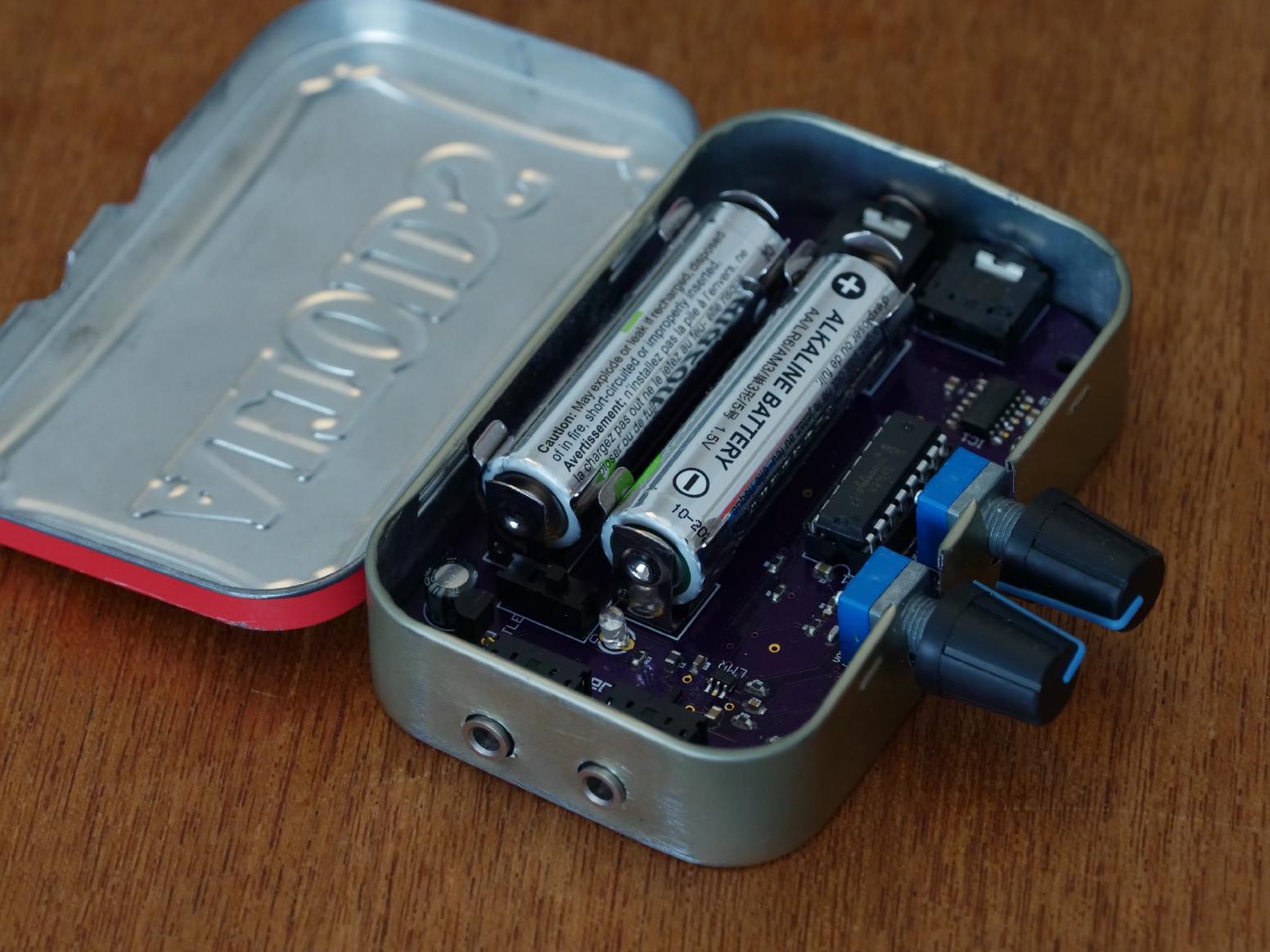Nanomixer (2016)

This is a tiny analog audio mixer with two stereo 1/8" inputs.
This is the first hardware project I was really satisfied with. It fits nicely in its enclosure, looks relatively tidy, runs forever on its battery, and does the thing it’s supposed to do.
I’m a big fan of tiny music gadgets: Korg’s Volca series, Pocket Operators, OP-1, etc. The point of this tiny mixer is to let me play a couple of them together, without carrying a bunch of extra stuff around. It does the job just fine.
Power supply
Starts with two AA batteries which are then boosted up to around 9V with an LMR62014 step-up converter. I used a TLE2426 rail splitter IC to make a virtual ground. This IC simply finds the midpoint of two voltages; then you can pretend that midpoint is ground, and act like you have a bipolar power supply.
Mixer
I really wanted to do this with a VCA instead of a passive attenuator. For each input, I wanted one knob to control the gain on both stereo channels. With the VCA, you can create a single control voltage and supply it to both amplifiers; then you don’t need to worry about finding a precise log-taper dual-gang pot. Plus, the VCA design keeps the pots out of the audio signal path.
I used the Coolaudio 2164 VCA chip, which is pretty much the only VCA IC I could find. It’s a clone of the old SSM2164 chip, famous among synth nerds. Unfortunately this part is fairly difficult to find; the big US distributors don’t carry it. I found it at Small Bear Electronics.
Output stage
There are two independently buffered stereo outputs: one to play back and one to record. They both output an identical mix, they just have independent buffers. Every piece of audio hardware should have an extra output!
I didn’t intend this, but it turns out the outputs are just barely powerful enough to drive a pair of headphones in a pinch.
Assembly
I used a hole punch to create holes for the audio jacks, and a pair of tin snips to carve out room for the knobs. And there’s a piece of mat board under the PCB to prevent any of the contacts from shorting out.
Want your own?
I made the board public at OSH Park, so you can order and assemble your own if you like! I suppose you’d also need the part list, which … email me I guess?
